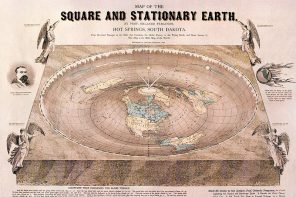The Indiscrete Image: Finitude and Creation of the Human
Thomas A. Carlson
University of Chicago Press, 2008
Thomas A. Carlson’s last book, Indiscretion: Finitude and the Naming of God, dealt largely with death. Carlson is a brooding yet incisive philosopher, a professor of religious studies at the University of California, Santa Barbara. By connecting Martin Heidegger’s understanding of life in the shadow of death with how certain Christian mystics thought of life under the gaze of God, he uncovered their common approach to human nature. To be made in the image of God, a God whose likeness we see only incompletely and through its absence in the world, means that our own definition is equally unfixed. The human condition is not a noun, but a verb. Human life has such limitless possibility that our nature, like God’s, is obscured in mystery.
In The Indiscrete Image, Carlson turns from death to birth, life, and love. He begins where Indiscretion left off, with our nature, and turns to our creations. The ones that mainly concern him are today’s most unsettling inventions: communications networks that transform our sense of time and place, as well as medical techniques that blur the lines between natural and artificial.
He warns us away from thinkers on both the political right and left—Bush’s go-to bioethicist Leon Kass and environmentalist writer Bill McKibben are his examples—who assume the existence of an ideal state of nature. But recognizing ourselves as the “indiscrete image” of God means that no fixed ideal—or idol—for what we are and what we aren’t will suffice. We, like all creation, are made to continually remake ourselves.
To spell out what he means, Carlson juxtaposes contemporary technology theorists, like N. Katherine Hayles and Mark C. Taylor, with early Christian mystics, from Gregory of Nyssa to Nicholas of Cusa, as well as the Renaissance thinkers who learned from them. These discourses, both modern and traditional, treat the human condition as anything but closed. We are not fenced-off creatures that interact with and manage a universe outside us, whether it be a medieval monastery or a virtual reality machine. We know ourselves only through our relationships with the things of a universe that is mostly beyond comprehension, our own inventions included.
The uncanny convergence between mystics and tech-savvy moderns means that listening to tradition in the face of new challenges doesn’t equate rolling back the clock. Technological creations need not, and ultimately cannot, calculate and control all the mystery and sacredness of living. The desire to preserve human dignity by imposing limits on the very meaning of dignity will smother the infinite possibility of our divine stamp—it is like bottling ourselves in formaldehyde. As we learn, create, and invent, which we were created to do in the image of God, we give birth to ourselves anew. Welcoming these new births with an open heart, Carlson believes, is the surest way to notice the divine in ourselves.
There is an optimism in his tone, but it’s not as if he expects salvation to come from machines. Nor does he give license to infinite personal choice. Perhaps the most important implications of The Indiscrete Image begin with noticing that we are not isolated automatons, but creatures utterly dependent on creation, both our own creations and nature’s. Choice happens only among these webs of connection, and the best choices admit that. Technology and tradition have more in common than one might think; both are networks that organize creation and inform how we choose in the midst of it. At the end, Carlson gestures toward love, a love which can cherish without being closed to change. That, he hints, will be the work of his next project.
The book doesn’t trade sophistication for accessibility. For one page, at least, there is a separate index just for Greek terms. Carlson has not much mercy for those uninitiated into the particular vocabulary of Heidegger and his inheritors, and at times these figures overshadow the ancient and modern primary sources. The chapter on James Joyce is insightful whether you’ve cracked Finnegans Wake or not. To be sure, when there’s an important point to be made, Carlson drives it home again and again, each time in terms more pregnant than before. His careful prose requires—but also rewards—the reader’s effort.
Scrupulously, and refreshingly, The Indiscrete Image avoids joining the so-called culture wars. It neither endorses a program of ethical rights and wrongs nor wears any political colors—although one can imagine those on either side gerrymandering its logic to their purposes. What Carlson fashions is something more basic than all that—built from the material of tradition and the worldliest contemporary reflection, he describes a way of thinking about being human in the mess of modernity.




